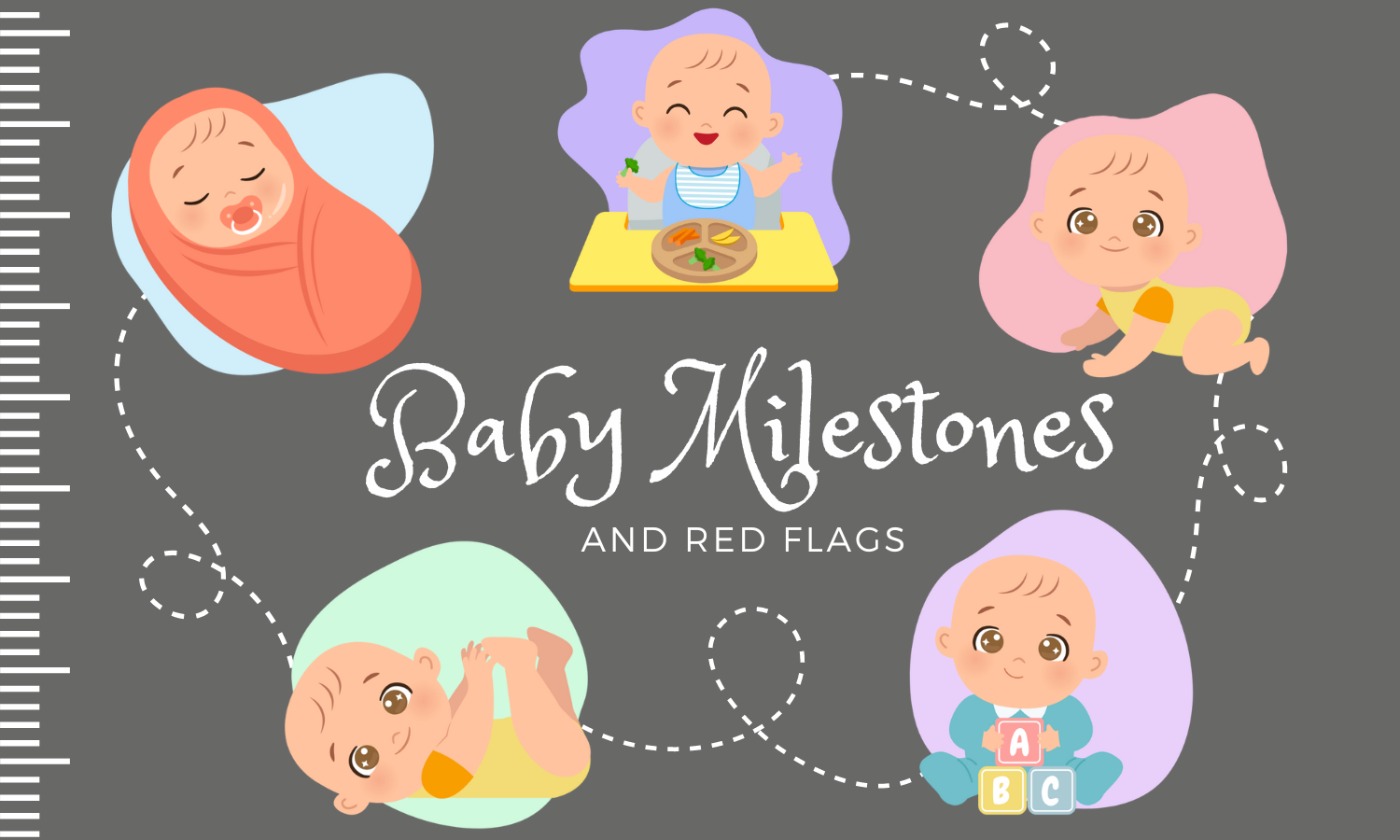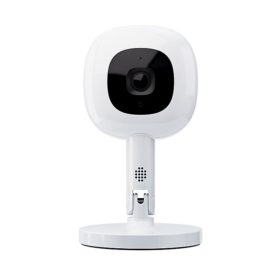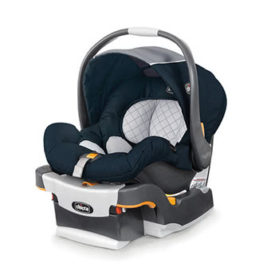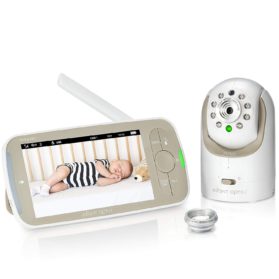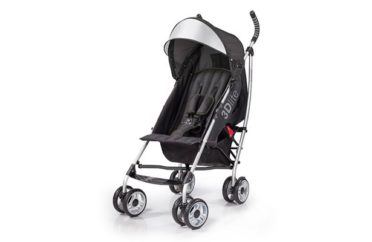As a new parent, there is a lot to learn about the different baby developmental milestones that your child should be experiencing month over month. Below we outline the developmental milestones babies experience in their first year of life and any red flags you should look for.
It can be difficult to know if your child needs attention in certain areas or if they are developing as they should. In this blog post, we provide a brief overview of milestones babies typically experience by a certain age during their first year.
We have gathered information from countless sources, including the CDC’s website for baby developmental milestones. But our list is not all-encompassing and may not account for your specific child. This summary is for guidance purposes.
You know your child best. If you feel the need, please consult your physician or seek appropriate help for your child.
If your child is not meeting one or more milestones, has lost skills he or she once had, or you have other concerns, act early. You can even ask for a referral to a specialist or call your state or territory’s early intervention program to find out about services offered. For example, a free screening provided by your state’s Early Intervention Services.
Also, check out the Best Baby Toys Based on Developmental Milestones to find items to entertain and nurture your baby during their first year!
The First Year: Baby Developmental Milestones
Newborns to 2 Months Old
3 Months Old to 4 Months Old
5 Months Old to 6 Months Old
7 Months Old to 9 Months Old
10 Months Old to 12 Months Old
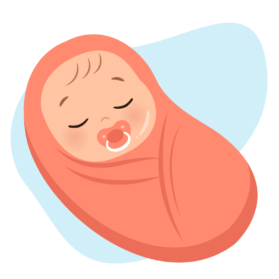
Newborn to 2 Months
Babies go through important emotional developments in the first few weeks of life and good outcomes are dependent on loving care. Physical touch is paramount during this time, and you cannot spoil your baby by holding them too much. A parent can help ensure their baby’s needs are met and nurtured in the newborn phase with activities such as:
- Holding and cuddling them
- Gentle touch
- Smiling at them
- Making eye contact
- Speaking, reading and singing to them
Along with a newborn’s emotional and social development, they will experience many physical developments: bodies will grow rapidly, gain weight and increase in strength. Their senses, which have already begun to develop, will continue to advance, most notably the senses of hearing and sight.
Hearing is actually fully developed at birth, however, babies retain some fluid in the middle ear, making it harder for them to hear lower-pitched sounds. As a result, newborns usually prefer higher-pitched sounds, such as a mother’s voice or music played on high-pitched instruments. As their exposure to new sounds grows so does a child’s language development.
Sight in newborns is not fully developed at birth. At first, they will see better peripherally. After a couple of weeks, they will start to see objects that are close in front of their faces. Patterns of light and dark or high color contrast will be easier to see during this time and they will enjoy gazing at any of those they can find.
See our list of Best Baby Toys Based on Developmental Milestones to find items to entertain your baby as well as nurture them during this time.
Developmental Milestones: Newborn to 2 Months
| Newborn | 1 Month | 2 Months | |
|---|---|---|---|
| Social Milestones | Stops crying in response to softly spoken words. Loves to see you, smell you, hear you and feel your loving touch. | Looks intently at your face when feeding. | Tries different facial expressions. Can recognize your smell. |
| Language Milestones | Communicates by crying, letting you know that they are hungry, tired or unhappy. Turns to light or your voice, and will respond with mouth movements. | Turns toward familiar voices. | Startles at loud noises (hearing is fully developed). |
| Cognitive Milestones | Upset by loud noises and harsh voices. Enjoys close skin-to-skin contact and eye contact. Can see about 20 – 25 cm away. | Can control eye muscles to follow a moving object | Stares at hands and fingers. Can see things 8 to 12 inches away (eyesight is developing). . Enjoys high-contrast patterns, especially black and white. |
| Physical Milestones | They have primitive newborn reflexes and no head control. | Can hold head up briefly. Can lift head and chest when put on tummy. | Holds head steady and back straight when gently pulled to a sitting position. Moves head from side to side during tummy time. |
Developmental Red Flags: Newborn to 2 Months

- Doesn’t smile at the sound of your voice by 2 months.
- Doesn’t respond to loud noises.
- Doesn’t follow moving object with eyes.
- Doesn’t bring hands to mouth.
- Has lost skills they previously had.
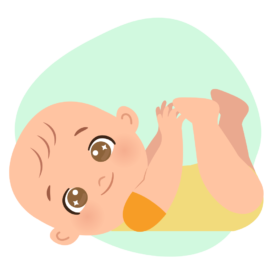
3 to 4 Months
During months 3 and 4 a baby’s social skills will be developing and they’ll love to look at faces, including their own. They’ll enjoy interacting with others and may even begin to recognize familiar faces during this time.
Their eyesight will continue to advance and they’ll be able to coordinate some movements with sight. This will help with activities such as batting at hanging toys or shaking rattles. They will still enjoy toys with high contrast in color.
During this stage a baby’s physical development includes development in their gross motor skills. They will discover their hands and use them to touch or hold objects. Soft, lightweight toys that can be gripped are good for nurturing this development.
See our list of Best Baby Toys Based on Developmental Milestones to find items to entertain your baby as well as nurture them during this time.
Developmental Milestones: 3 to 4 Months
| 3 Months | 4 Months | |
|---|---|---|
| Social Milestones | Smiles responsively. Turns head toward sounds, especially your voice. | Imitates you (ie: sticks out tongue). Begins to laugh. |
| Language Milestones | Makes cooing noises. | Makes babbling noises. Imitates sounds. |
| Cognitive Milestones | Tracks movement with eyes. Possibly self-soothes by thumb-sucking. | Watches faces. Turns head toward sounds. Has improved hand-eye coordination. |
| Physical Milestones | Reaches for objects. Has improved head and neck control. Makes smoother arm and leg movements. | Brings hands to mouth. Reaches for objects and able to grasp toys. Lifts head and chest during tummy time. Pushes down on feet when placed against a solid surface. |
Developmental Red Flags: 3 to 4 Months

- Doesn’t smile at other people.
- Doesn’t coo or make sounds.
- Doesn’t follow movement by turning head.
- Has trouble moving both eyes in all directions.
- Cannot support head well.
- Doesn’t bring hands to mouth.
- Doesn’t grasp for and hold objects.
- Doesn’t push down with legs when feet are placed on a hard surface.
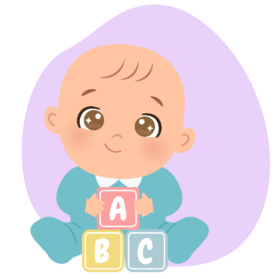
5 to 6 Months
From 5 to 6 months a baby’s depth perception improves, and they’ll begin to see the world around them in 3D. They’ll also have better color vision.
Around six months, they might begin teething. This means they’ll likely put anything they can hold into their mouth. Parents need to be extra careful about choking hazards and toys that might splinter, chip, or have sharp edges during this time.
Babies will begin to babble and make lots of single-syllable sounds. Though they likely won’t be communicating with words for a while longer, their language skills will be developing. Parents can work on language development by speaking, singing and reading to them.
During the 5th and 6th months, their muscles will continue to strengthen and their coordination will improve. Physical development may include being able to roll over, kick, move their head up and from side to side. They’ll also become better at reaching for and grasping objects.
See our list of Best Baby Toys Based on Developmental Milestones to find items to entertain your baby as well as nurture them during this time.
Developmental Milestones: 5 to 6 Months
| 5 Months | 6 Months | |
|---|---|---|
| Social Milestones | Enjoys playing, and may cry when playing stops. Smiles at familiar faces. | Likes playing games like patty-cake. Recognizes familiar faces. |
| Language Milestones | Babbles and makes more sounds. Blows raspberries and spits bubbles. | Tries to “talk” with you. Says sounds like “ma” and “ba”. |
| Cognitive Milestones | Recognizes objects, like a favorite toy. Enjoys playing with toys. | Enjoys looking in the mirror. Responds to own name. |
| Physical Milestones | Uses hands and eyes together to reach and grab for objects. Holds head steady without support. Begins to roll over. | Able to sit when propped up with pillows. Learning to transfer objects from one hand to the other. Explores objects using mouth. |
Developmental Red Flags: 5 to 6 Months

- Shows no affection for caregivers.
- Doesn’t make vowel sounds such as “ah,” “eh,” “oh.”
- Doesn’t laugh or make squealing sounds.
- Does not turn head to locate sounds.
- Doesn’t try to get things that are in reach.
- Has difficulty getting things to mouth.
- Doesn’t roll over in either direction.
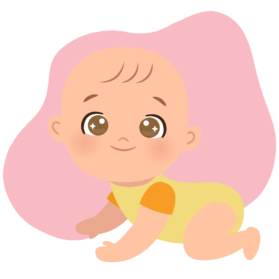
7 to 9 Months
At 7-9 months, baby development is continuing to progress rapidly. At this age babies start clapping along with you when you sing songs together! This is an extremely social stage where babies love interacting and playing games like “Patty-cake” and “Peek-a-boo”.
They are starting to understand object permanence, objects still exist even when they’re missing from sight. In other words, if baby sees an item being taken away, they’ll understand that it’s still around somewhere.
Cognitive development includes babies responding to their name and starting to use gestures like pointing and waving goodbye. At this stage babies enjoy putting items in different places and retrieving them, and some of the best baby toys for this age encourage that behavioral development.
Physical milestones include baby learning how to sit without help, some babies may even be able to pull themselves up into a standing position with the help of furniture. This is also the stage where babies begin scooting and crawling. Encourage them to explore, but keep them safe!
It’s important that baby has plenty of opportunities for exploration so they can further develop their understanding of their environment. But if you haven’t already baby-proofed your home, now is the time!
See our list of Best Baby Toys Based on Developmental Milestones to find items to entertain your baby as well as nurture them during this time.
Developmental Milestones: 7 to 9 Months
| 7 Months | 8 Months | 9 Months | |
|---|---|---|---|
| Social Milestones | Responds to others’ expression of emotion. Loves playing with you. | Plays interactive games like peek-a-boo. Might become attached to a special toy. | Might be scared of strangers. Misses parents when gone. |
| Language Milestones | Babbles chains of consonants like “ma ma ma ma”. | Babbles in more complex ways. | Makes many different sounds. |
| Cognitive Milestones | Notices and tracks distant objects with eyes. | Understands familiar words, like “no”. Can starts to understand sign language. | Uses fingers to point. Remembers the location of toys and other objects. |
| Physical Milestones | Likes bouncing on legs when supported. Rolls over both ways. Uses a “raking” movement to move small objects. | Able to support their own weight on their feet when held up. Starting to push back when on stomach. Begins to clap hands. | Pull themselves up to stand. May begin crawling. Can sit unsupported. |
Developmental Red Flags: 7 to 9 Months

- Doesn’t play any games involving back-and-forth play.
- Doesn’t seem to recognize familiar people.
- Doesn’t babble words like “baba”.
- Doesn’t respond to their name.
- Doesn’t look where you point.
- Doesn’t sit with help.
- Doesn’t transfer toys from one hand to another.
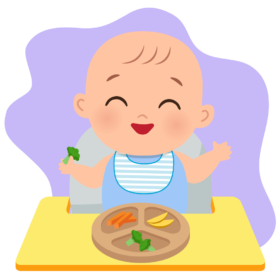
10 to 12 Months
As baby development continues between 10 to 12 months, many new milestones are reached and babies attention span and desire to play with toys has increased significantly. They love figuring things out and we have found some of the best baby toys for them as they progress.
At this stage baby language development has come leaps and bounds and you will likely hear them talking in short phrases, attempting to copy what they hear from others and babbling away – so be sure to chat back!
Cognitive development between 10 to 12 months includes learning about cause and effect – your baby may begin shaking a toy to see what happens or dropping objects from a height.
Physical milestones include pulling themselves up off the floor, walking with assistance and even speaking words in short phrases. Children at this age can also use their fingers more precisely, like pointing, turning book pages and mastering the “pincer grasp” (grabbing with thumb and index finger).
See our list of Best Baby Toys Based on Developmental Milestones to find items to entertain your baby as well as nurture them during this time.
Developmental Milestones: 10 to 12 Months
| 10 Months | 11 Months | 12 Months | |
|---|---|---|---|
| Social Milestones | Begins to “pretend” play by mimicking. | Points at objects or people of interest. Shows preferences for certain people or toys. | Starts to follow simple directions. |
| Language Milestones | Copies patterns of speech. Communicates using basic gestures, like waving goodbye. | Says short words (“Mama”, “Dada”). Understands more words. Looks at objects when named. | Says and average of 2-3 words often. |
| Cognitive Milestones | Learns to understand cause and effect. May begin to experiment with toys by throwing. | Stacks and sorts toys. Explores objects more by banging or shaking them. | Helps while getting dressed. Look at correct picture when image is named. |
| Physical Milestones | May try to climb up the stairs. Uses the pincer grasp. Able to get into sitting position. Starts to crawl. | Pulls up to stand. Uses furniture to get around. Turns pages while you read. | Stands unaided, may take first steps. Masters the pincer grasp. |
Developmental Red Flags: 10 to 12 Months

- Doesn’t learn gestures like waving bye-bye or shaking head “no.”
- Does not show interest in games like “peek-a-boo” or “patty cake”.
- Doesn’t say single words like “mama”.
- Doesn’t point to things.
- Does not search for objects that are hidden.
- Does not crawl or drags one side of body while crawling.
- Cannot stand when supported.
- Does not sit steadily.

Dr. Insiyah is a licensed pediatrician, with additional board certifications in Breastfeeding and Lactation (NABBLM-C) and Lactation Consultant (IBCLC) with a deep understanding of the unique needs of children and mothers. With a strong focus on the critical fourth-trimester care period, she provides comprehensive support and goes beyond her medical expertise to offer additional services and support in areas such as breastfeeding, parenting, mental health, and postpartum issues.

